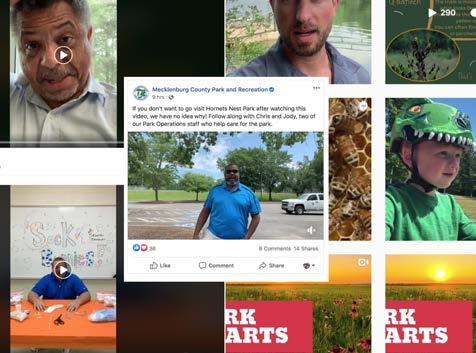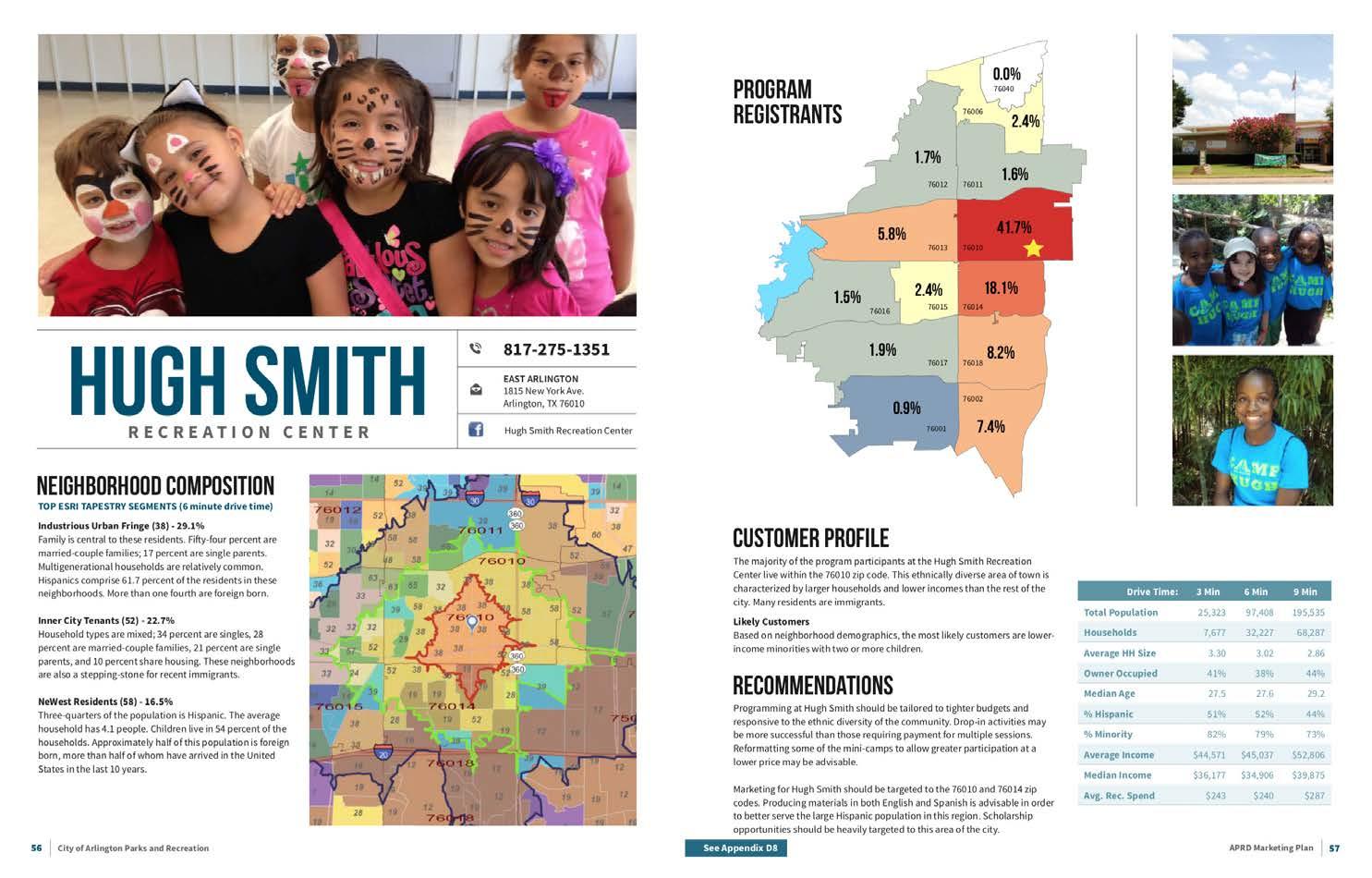
19 minute read
Goal #11 Communication
Increase awareness of programs and facilities through more effective marketing and branding.
11.1 Increase the marketing budget and grow the marketing team to improve communication and programming engagement goals.
Advertisement
Mecklenburg Park & Rec has taken some steps in the direction of marketing and communication success in recent years. The decision to hire a marketing coordinator in 2018 was a positive step. Staff noted improvements during the short time the marketing coordinator was with the organization. However, the addition of only one position was below the 2015 recommendations for marketing staffing. Even with some part-time support, one person is not nearly sufficient for a department that serves more than 1 million people and with an operating budget of more than $50 million. Substantial organization and process changes must occur to successfully accomplish the goal to increase engagement and awareness.
Another noteworthy step was staff embracing digital video content during the COVID-19 pandemic. This demonstrated the staff’s passion, originality, and flexibility to new communication methods. The “do it yourself” nature of some social media platforms also empowers the staff to share their stories in their own personal way while maintaining agency over produced content. The uptick in engagement with this content proved there is an opportunity to build upon this approach.
Budget
A commonly suggested standard in the private sector is to invest approximately 10-15% of revenues in marketing. The Learning Resources Network (LERN), a continuing education and lifelong learning association, makes a similar recommendation for universities, colleges, schools, recreation departments, and associations.
Research by the National Recreation and Park Association (NRPA), published in their 2019 Marketing and Communication Report, found the following (See Figure 4.2): • 15% of park and recreation agencies designate 10-15% of their operating budget to marketing and communication activities. • 26% of park and recreation agencies designate 5-9% of their operating budget to marketing and communication activities. • 30% designate 2-5% of their operating budget to marketing and communication activities.
• 28% of park and recreation agencies designate 0-1% of their operating budget to marketing and communication activities. The same report by NRPA found that agencies with an operating budget of $10 million and greater spend an average of 2% of their operating budget on marketing and have an average of three FTE for marketing and communication. Staff salaries and benefits should comprise one-half to two-thirds of the allocated marketing budget. The remainder should be allocated to the following areas: printing, postage, advertising, promotional
Amount of Budget Spent by Park and Recreation Agencies on Marketing and Communications Activities (percent distribution)
Mecklenburg Park & Rec
materials, contracts, software, and event related expenses. Despite being one of the larger departments in this category, Mecklenburg Park & Rec is well below average when it comes to investing in marketing and communication, including having the dedicated staff to support it.
Mecklenburg Park & Rec’s FY2021 operating budget is just over $51 million. Currently, Mecklenburg Park & Rec only has one full-time marketing position budgeted (currently vacant), with part-time support from two employees who fill other roles in the organization. Staff report $25,000 for basic marketing expenses, with $60,000 budgeted for the “Get Going Guide” and another $60,000–75,000 for the special events team. Even assuming other minimal financial contributions from other divisions for printing or advertising, the total current investment in marketing and communication by Mecklenburg Park & Rec is markedly less than 1%.
Key Observations
• 0-1%There is a need for dedicated creative staff to support the marketing needs of the park and recreation department. The lack of 2-4% dedicated marketing and communication 5-9%efforts is a lost opportunity for Mecklenburg
Park & Rec. 10-14% • Recent efforts were a step in the right direction, but insufficient for the size of
Mecklenburg Park & Rec and amount of opportunity. • COVID-19 pandemic constraints forced digital engagement creativity which has been effective. • Marketing staff must proactively pursue
Department and County goals through improved strategic marketing, storytelling, branding, and community engagement. Return on Investment (ROI): Marketing and communication investment have repeatedly paid off for diverse organizations throughout
15% 28% 26%
5%
11%
30%
0-1% of budget 2-4% of budget
All 5-9% of budgetPopulation Served Annual Operating Budget
Less than 20,000 residents 20,000- 49,999 residents 50,000- 99,999 residents 100,000 residents and greater
10-14% of budget 15+% of budget Under $1 million $1.0- 4.9 million
3% 5% 3% 3% 2% 5% 3% 4% 2%
4.2 Nearly 3 in 5 Park and Recreation Agencies designate less than 5% of their annual operating budgets to marketing and communications activities.
the country. In 2012, the City of Arlington, Texas, increased their marketing staffing and budget by $190,449 (from $351,960 to $542,409) and saw their 2013 revenue increase by $761,125 compared to the four-year average of 20092012. More importantly, they saw engagement skyrocket and participation numbers increase significantly in five key areas: summer camp programs, after school programs, fitness memberships, swim lesson registrations, and rentals.
Hiring qualified marketing staff to analyze current practices and make recommendations can make a significant difference. In Westminster, Colorado, marketing staff made minor changes to an annual fitness drive to change how it was advertised. In prior years, the initiative brought in $13,000 to $16,000 in membership revenue during the first week of January. With the new approach, the program brought in $185,898 in one week and continued to bring in over $100,000 in new membership revenue in subsequent years. Genesee County Park and Recreation in Michigan conducted a marketing return on investment analysis on event advertising and found an ROI ranging from $2 to $13 in direct revenue for every dollar spent on marketing.
Typical Median Percentage of Park and Recreation Operating Budgets Dedicated to Marketing and Communications Activities
Population Served Annual Operating Budget
All Less than 20,000 residents 20,000- 49,999 residents 50,000- 99,999 residents 100,000 residents and greater Under $1 million $1.0- 4.9 million $5.0- 9.9 million $10 million and greater
3% 5% 3% 3% 2% 5% 3% 4% 2%
4.3 According to NRPA, Park and Recreation departments of Mecklenburg County’s size should spend 2% of their operating budget on marketing and communication.
While a financial return on investment should be anticipated, it is vital to realize that increased participation and revenue is not the only return on investment, nor is it the most important. An investment in marketing, branding, and engagement can also: • Create a sense of place through improved branding and design standards. • Create a sense of community through engagement and storytelling. • Improve physical and mental health through increased participation. • Foster better relationships through greater engagement and participation. • Promote diversity, equity, and inclusion to services.
• Improve trust and satisfaction in government. In building a new marketing team, goals and objectives must be clearly identified by leadership. Marketing staff must be trusted and empowered to aggressively pursue these goals. Key performance indicators (KPIs) should be identified and agreed upon by Department and County leadership at the outset so there is consensus about the direction, expectation, and progress of the marketing efforts.
Staff salaries and benefits should comprise onehalf to two-thirds of this amount. The remainder should be allocated to the following areas: printing, postage, advertising, promotional materials, contracts, software, and event related expenses.
11.1 Key Actions
Increase budget for Mecklenburg Park & Rec’s marketing (See Figure 4.3) Expand marketing staff capacity:
The following positions are suggested as a starting point and demonstrate the range of recommended skill sets. These should be adapted based on department and community needs:
• Marketing and Communication
Manager: Leadership of marketing and communication team, responsible for alignment with County and department goals and objectives, and member of
Department leadership team and County communication team. Empowered to make strategic decisions with marketing and communication coordinators.
• Marketing and Communication
Coordinators: Liaisons to specific department divisions who provide communication strategy and ensure marketing needs are fulfilled. These positions could also take responsibility for developing related social media, website, and newsletter content. • Graphic Designers: One or more professional graphic designers to develop marketing and communication collateral that adheres to brand standards and professionally represents
Mecklenburg Park & Rec. • Digital Media Specialist: Responsible for website management and overall social media administration. • Videography Specialist: Produce regular (weekly and monthly) video series for
Mecklenburg Park & Rec as well as oneoff promotional videos for major events and milestones. • Language Access and Inclusion: If a similar role does not already exist within
Mecklenburg Park & Rec or the County, there should be someone within the team who is responsible for ensuring that marketing and communication efforts meet the needs of a diverse community. This would include a focus on translation services and accessibility of information.
11.2 Execute a holistic marketing and communications plan to increase participation, awareness, and tell better stories.
Mecklenburg has an opportunity to increase participation in parks, facilities, and programs through improved marketing, branding, and community engagement efforts. In a 2019 survey, consultants for Meck Playbook found that while 87% of those surveyed have visited a park or facility in the last year (above national average), only one in three people visit a park or facility with monthly or more frequency. Participation in programming also remains below the national average. While program participation has increased slightly since 2015, it remains at a 23% participation rate, which is below the national average of 34%.This may seem counterintuitive, as parks, open spaces, and programs often seem full or have waitlists. This displays a disconnect between how Mecklenburg Park & Rec is operating and what it provides. It also illuminates that more study is needed to discover who is participating and how. Lack of awareness is the greatest barrier to program participation (38% of respondents) and the second greatest barrier to park and facility use (12% of respondents). This can be remedied by improving and streamlining marketing and communication across platforms like email, news, and social media (See Figure 4.4). Part of a larger revamped communications strategy would include developing a strong brand identity and implementing this consistent branding across platforms, parks, and facilities. The 2019 consultant survey indicated that Mecklenburg’s marketing and communication efforts need improvement. For every communication channel, the negative responses outweighed the positive. For all but one platform, less than one in four rated the communication as good or excellent. Mecklenburg Park & Rec’s website was the only exception, at 27%. It is critical to note that increasing awareness and participation is a simple means to a far greater end. Increasing awareness and participation ties directly to departmental goals of reaching new community members and establishing itself as a community leader. The first step in improving awareness and participation is to hire a Marketing and Communications Director within the department or at an enterprise level. The Marketing and Communications Director should then develop a holistic marketing and communications plan. There are many approaches that can be taken to accomplish this goal. Due to the size, complexity, multitude of operations, and diversity of the community served, it is recommended to begin with a high-level plan. This would guide the overall marketing and communication of Mecklenburg Park & Rec. Once this is established, more detailed goals and objectives should be developed for different service areas or divisions, such as parks, facilities, or programming. Then, specific strategies and tactics could be crafted for each facility, which would be tied to the composition and needs of each community. Components of a useful marketing and communication plan should include, but not be limited to the following: • Situation Analysis - an evaluation of the internal and external conditions that affect
Mecklenburg Park & Rec to identify the current opportunities and challenges for
Mecklenburg Park & Rec. • Target Market Profiles - specific group of users most likely to respond positively to
Mecklenburg Park & Rec events, programs, and places. The analysis will be based on specific factors like location, age, income, and access to places and services.
• Competitive Analysis - a similar provider survey/analysis to understand other providers, their services, and marketing strategies. • Goals/Objectives - identify purpose of the plan, e.g. to grow program participation or to increase awareness of programs, places, and events.
• Strategies/Tactics - methods to realistically deploy the goals or objectives. • Marketing Budget - this budget should include costs for staffing, contracts, brand deployment, etc. • Key Performance Indicators- measurements to gauge long term performance of the plan.
11.2 Key Actions
• Analyze Mecklenburg Park & Rec’s current marking approach to guide future marketing and communication of the Department.
Rate of Quality of Communication
Website
Word of Mouth
Email 7%
4%
5% 20% 42%
18% 39%
16% 38%
News 4% 17% 43%
Social Media
Flyers & posters at MCPR facilities 5% 15% 42%
16%3% 43%
Staff outreach
Another way 3% 9%
9% 43%
46%
0% 20% 40% 12%
15%
14% 20%
25%
27%
17%
17%
14%
15% 20%
22%
24%
31%
46%
60% 80% 100%
4.4 Statistically Valid Survey respondents rated the quality of communication they received from Mecklenburg Park & Rec regarding programs and activities.
Excellent Good Neutral Below Average Poor
11.3 Implement a new visual brand for Mecklenburg Park & Rec to more effectively communicate the diversity of the system and its audiences.
Any update of the Mecklenburg Park & Rec visual brand should be studied through a broad engagement process. The effort should be informed by research and community engagement and refined through several design concepts. Ideas ranging from evolutions of the current visual identity to bold new directions should be considered.
An update to the current brand or proposed rebrand should be outlined in a brand standards guide. The comprehensive visual identity system should include a Department logo along with many other elements. These elements should include divisional logos, color palette, fonts and typography, photography, iconography, graphic devices, and more. A brand standards guide explains in detail the building blocks of the visual identity system, usage guidelines, and a messaging framework. The logo is only one part of a larger brand system. Additional attributes, division specific elements, and color scheme should all work together. A community survey conducted as part of Meck Playbook indicates that far too many residents are unaware of what Mecklenburg Park & Rec provides and how to take part. When asked, residents recognized that the current brand feels outdated and misaligned with the experiences people have in parks, facilities, and on trails. A refreshed brand, including a logo, is only one tool to better communicate to residents, increase participation, and stay current. An updated or new look should be rooted in the rich history of Mecklenburg Park & Rec while reflecting a world-class, 21st century park and recreation department. In tandem with a refocused effort on marketing and storytelling, an updated or new brand would have the potential to elevate the visibility of Mecklenburg Park & Rec, foster awareness, and become a point of pride for Mecklenburg County to rally around. Implementing a consistent, updated brand, or a full rebrand demands decisive action and a commitment to see it through a period of transition. It may feel like a risky move, but there is a greater risk in maintaining the status quo, falling behind the times, and potentially failing to attract new audiences. Through the transition, Mecklenburg Park & Rec should take care to engage staff and longstanding park and recreation users so that it does not alienate some of its biggest champions. This is an opportunity to get them excited about the future of Mecklenburg Park & Rec and encourage them to help build an even larger community of supporters. Rolling out a consistent updated or new brand across a vast park and recreation system is a significant undertaking, so early planning for funding and implementation is key. Rebranding also requires significant buy in from departmental leaders. There must be a sustained commitment to implement changes across the system (from logo to letterhead, apparel to color scheme) in order to resonate as a new direction with community members.
4.5 An excerpt from the 2015 Arlington Parks and Recreation Department Marketing Plan featuring recommendations based on a customer profile composed of demographic and psychographic information for the surrounding community (drive time analysis) and the mapping of program registrants.
Updates to the Department’s brand would help to grow awareness, signal a strategic evolution, adopt a more contemporary look and feel across the system, position the Department as a leader in the park and recreation field, and equip the marketing team with a powerful set of tools to communicate Mecklenburg Park & Rec’s offerings.
Proposed Department Name
Along with the implementation of a consistent brand, a “name rebrand” should be considered for Mecklenburg Park & Rec, adapting a short form version of the name for everyday branding and marketing purposes. The full version of the name – “Mecklenburg Park & Recreation Department” – would remain for official purposes. “Mecklenburg Park & Rec” is the recommended short brand name, which could appear in a logo and be used for everyday marketing purposes. The short brand name is more efficient with words in order to support clear marketing messages, build recognition, feel more colloquial and inclusive, and discourage the use of acronyms such as “MCPR” which do not resonate with external audiences. “Mecklenburg Park & Rec” pairs well with Mecklenburg Park & Rec’s vanity URL (parkandrec.com) and social media handle (@MeckParkRec). There are recent precedents for this change from peer cities. Metroparks of the Toledo Area changed their brand name to Metroparks Toledo as part of a comprehensive rebrand, and the New York City Department of Parks and Recreation adopted the moniker NYC Parks.

4.6 Logo from the 1980s. The tagline “A Natural Place to Be” was added in 1986.

4.7 Current 2018 logo.
Pillars of Rebranding Mecklenburg Park & Rec
The Brand Assessment laid out five pillars as strategic guidelines for a potential visual rebrand:
Legacy: Honor the proud past while looking forward. Consider how to build on the recognizability and nostalgia of the existing identity as a new one is introduced. Strategize for a thoughtful transition to a new visual identity system. Nature and More: Mecklenburg Park & Rec offers a wide variety of natural spaces, as well as a diverse set of experiences that take many forms and happen in a range of places. The logo alone cannot represent everything all at once but should offer a starting point to build a robust system that reflects the many different aspects of Mecklenburg Park & Rec. Inclusive Diversity: The brand should reflect the rich variety of places, programs, events, and people. It should invite many unique voices and celebrate many different experiences. It should be relatable to all, while still reflecting the history of the community. Growing populations, changing demographics, and shifting park uses are key considerations for the new brand and its longevity. 4. Storytelling: Branding is not just the visual identity. Messaging and marketing are key to telling more stories, better. The visual identity system should support the marketing strategies that are part of Meck Playbook. 5. Implementation: A potential rebrand must take into consideration the practical challenges of rolling out a new look across a wide variety of applications. Some items might be replaced simultaneously while others are updated gradually. Refer to the Brand Assessment (Appendix 7) for more on implementation.
Visual Identity
4.8 Successful brands use a unified visual identity to tell stories and promote shared experiences.
Experience
Brand
Storytelling
Messaging
While proximity and access to resources are large impediments to participation, the community survey found that the biggest barrier to participating in Mecklenburg Park & Rec programming is a lack of awareness. Along with renewed marketing efforts, a messaging framework with clear guidelines would increase consistency in communications and help residents understand the scope of programming. In the past, Mecklenburg Park & Rec has used the tagline “The natural place to be.” Moving beyond a tagline, a flexible messaging framework could enable Mecklenburg Park & Rec to more effectively communicate its full range of offerings. It creates language that can evolve over time and is rooted in Mecklenburg Park & Rec’s legacy tagline. The word “natural” could be swapped out and replaced with other adjectives to complete the phrase. These would not act as formal taglines but rather ways to constantly expand the narrative and tell stories that reflect Mecklenburg Park & Rec’s diversity of places and offerings. For example, “The active place to be” could be used to call out sports programming while “The healthy place to be” could position Mecklenburg Park & Rec as a champion of community wellbeing, and so on.
11.3 Key Actions
Implement a consistent visual brand to more effectively communicate the diversity of the system and its audiences:
• Create internal and external focus groups to evaluate the current brand and review the brand examples from
Meck Playbook. • Release the brand in 2024 to celebrate the Department’s 50th anniversary.
Rebrand the Department name to “Mecklenburg Park & Rec” for everyday branding and marketing purposes:
• The full version of the name–
Department”–would remain for official purposes.
4.9 Recreation and Waterfront signage in Burlington, Vermont after the Burlington Parks rebrand.
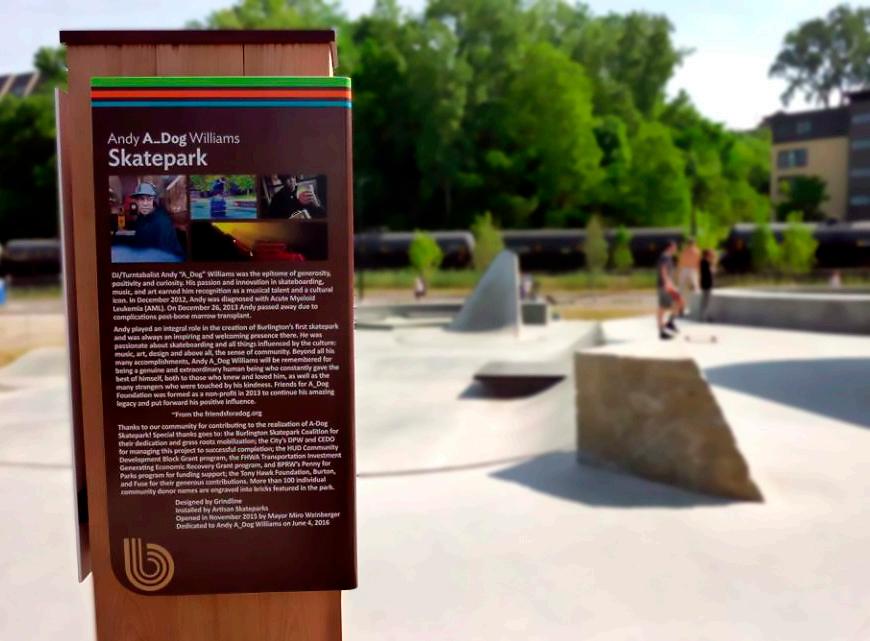
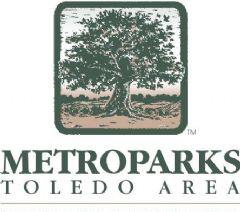
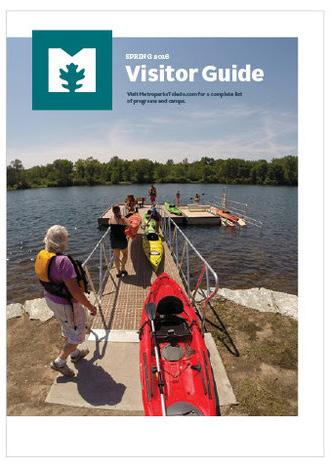

4.10 Metroparks Toledo logos before and after a rebrand. 4.11 An application of options of the Metropark Toledo rebrand.
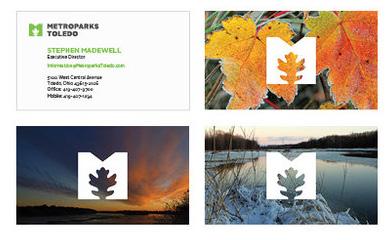
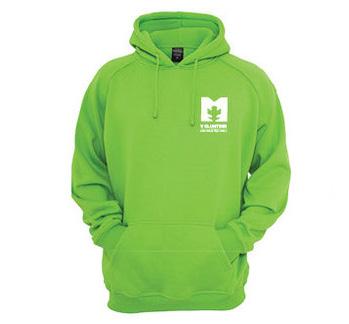
11.4 Tell individual stories (of visitors, staff, etc) to personalize the image of Mecklenburg Park & Rec, build interest in offerings, trust in the organization, and energy.
The story of Mecklenburg Park & Rec is the amalgamation of many diverse and interesting stories. Reflecting the diverse community in images is a story, as is information about the historical background of a place. Highlights of an event on social media is an example of storytelling. Storytelling can be from partners, residents, visitors, or Mecklenburg Park & Rec itself.
Highlighting individual narratives of staff, visitors and community members will be a friendly and personalized way to engage with the County. Mecklenburg Park & Rec has already taken steps to do so recently. As a result of the impacts of COVID-19 restrictions, Mecklenburg Park & Rec’s staff adapted. They posted much more video content, and the community responded well to this shift. There was a significant increase in engagements per post. The team should make sure that this strategy continues even after other traditional means of engagement are more possible again. Mecklenburg Park & Rec should build upon this trend by continuing to humanize the brand through regular video content that features staff, visitors, volunteers, and community partners. Regular, short video segments can be very impactful in raising awareness, generating interest, increasing trust, and driving participation. The platform of digital video provides a level of authenticity, personality and transparency that is only exceeded by in-person communication. It allows the viewer to see that the staff, leadership, or participants are people like them. The benefit of digital video is that it is scalable, as it can reach thousands with minimal investment.
